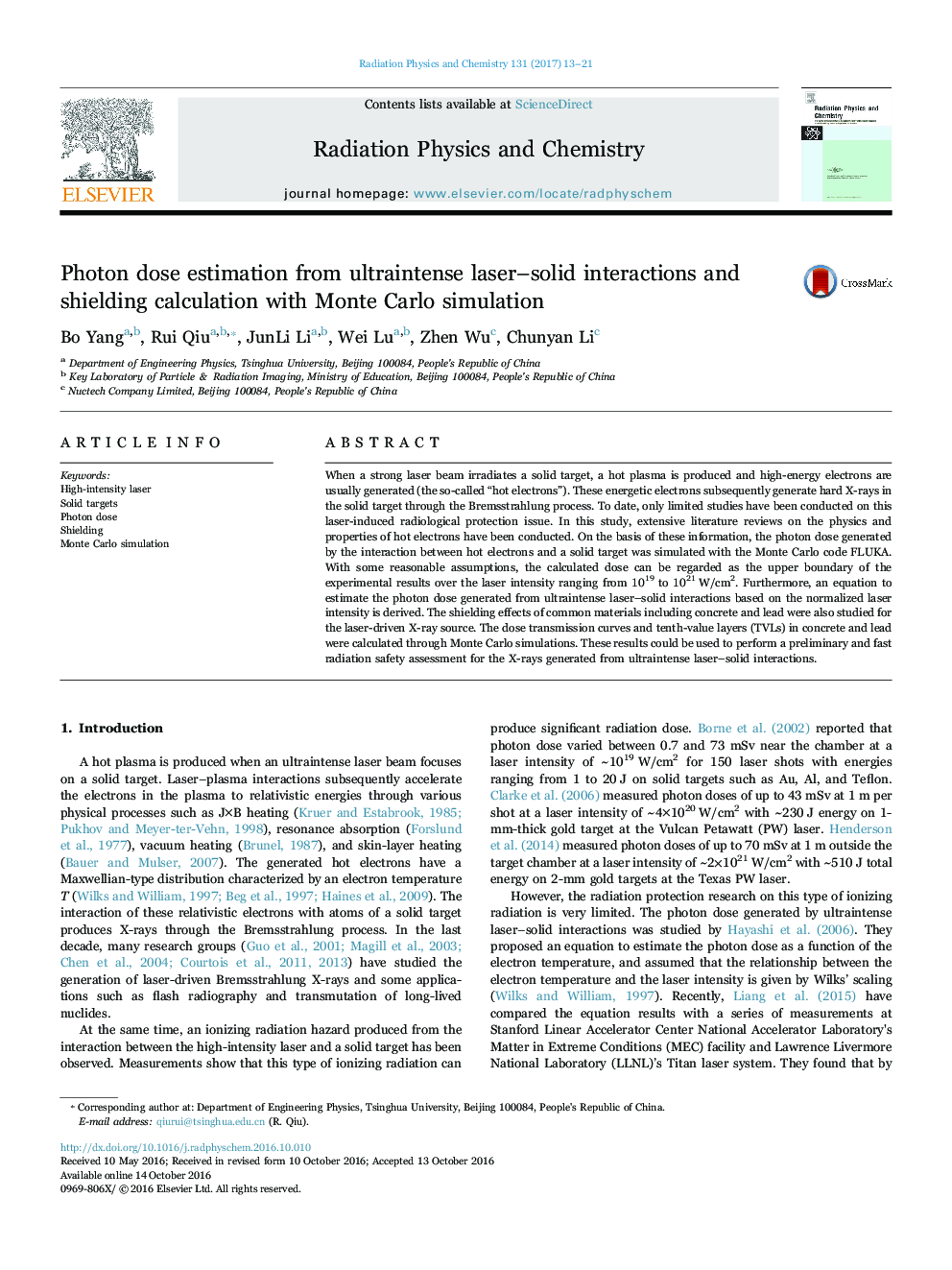| Article ID | Journal | Published Year | Pages | File Type |
|---|---|---|---|---|
| 5499191 | Radiation Physics and Chemistry | 2017 | 9 Pages |
Abstract
When a strong laser beam irradiates a solid target, a hot plasma is produced and high-energy electrons are usually generated (the so-called “hot electrons”). These energetic electrons subsequently generate hard X-rays in the solid target through the Bremsstrahlung process. To date, only limited studies have been conducted on this laser-induced radiological protection issue. In this study, extensive literature reviews on the physics and properties of hot electrons have been conducted. On the basis of these information, the photon dose generated by the interaction between hot electrons and a solid target was simulated with the Monte Carlo code FLUKA. With some reasonable assumptions, the calculated dose can be regarded as the upper boundary of the experimental results over the laser intensity ranging from 1019 to 1021Â W/cm2. Furthermore, an equation to estimate the photon dose generated from ultraintense laser-solid interactions based on the normalized laser intensity is derived. The shielding effects of common materials including concrete and lead were also studied for the laser-driven X-ray source. The dose transmission curves and tenth-value layers (TVLs) in concrete and lead were calculated through Monte Carlo simulations. These results could be used to perform a preliminary and fast radiation safety assessment for the X-rays generated from ultraintense laser-solid interactions.
Keywords
Related Topics
Physical Sciences and Engineering
Physics and Astronomy
Radiation
Authors
Bo Yang, Rui Qiu, JunLi Li, Wei Lu, Zhen Wu, Chunyan Li,
